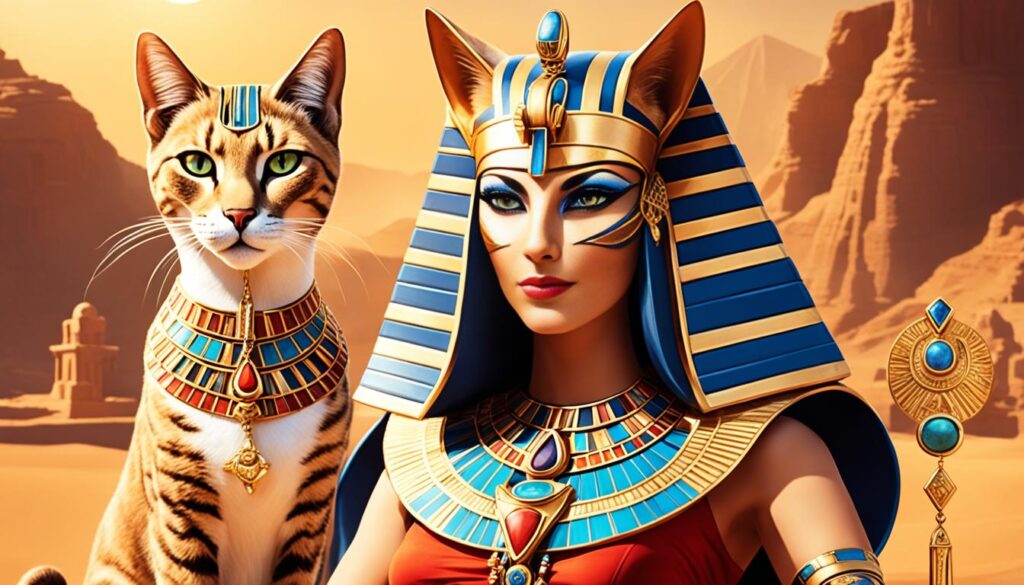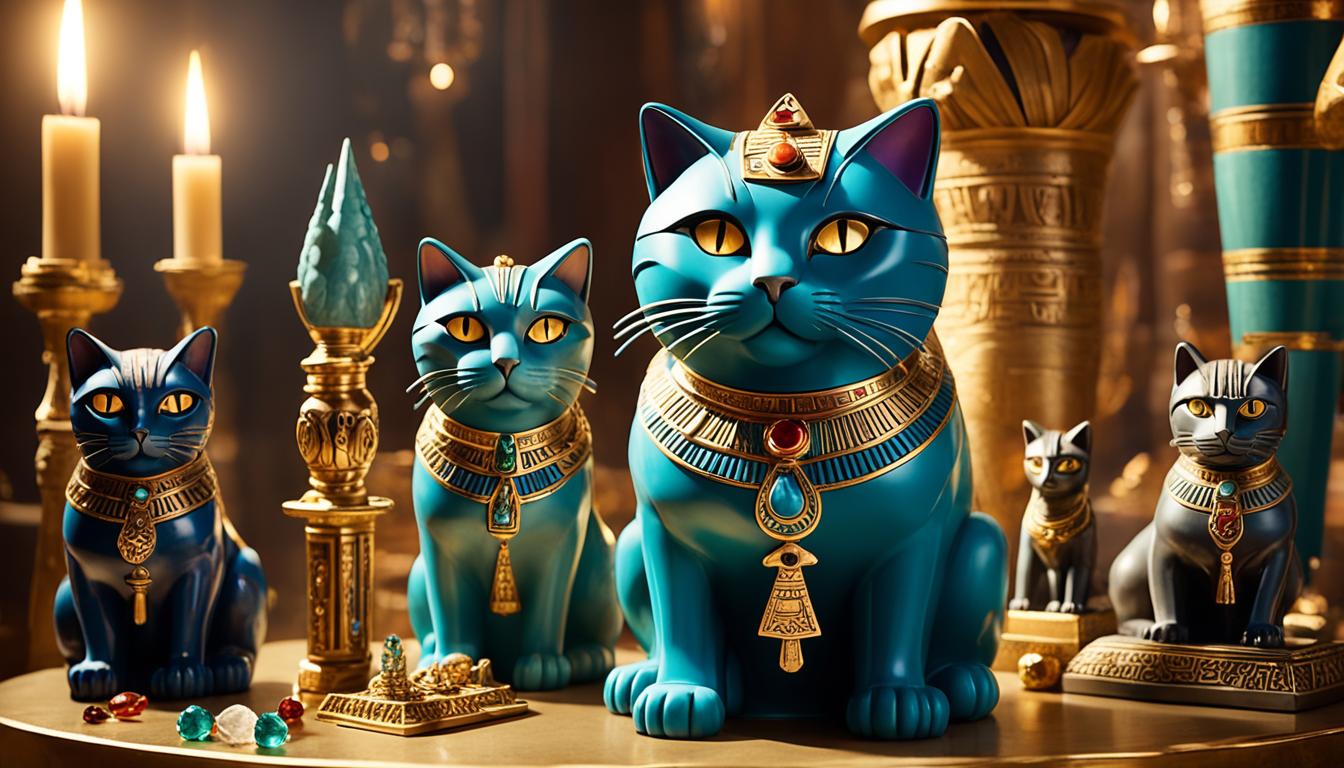In ancient Egypt, cats held a special place in society and religion. These felines were sacred animals closely linked to Egyptian deities. Ancient Egyptians believed cats had divine qualities and brought good fortune.
Cat worship became a key part of ancient Egyptian culture. Felines were shown in art and mummified after death. Some temples were even built to honor them.
Cats were important in ancient Egyptian homes. They provided companionship and helped control pests. Egyptians valued their bond with these animals, leading to their high status.
Cats were seen as earthly forms of divine aspects. This deep respect for felines was present in all levels of society. From common homes to royal courts, cats were highly esteemed.
Key Takeaways
- Cats were considered sacred animals in ancient Egypt
- They were associated with various Egyptian deities
- Cats provided companionship and pest control in households
- Cat worship was an integral part of ancient Egyptian culture
- Cats were depicted in art and mummified after death
The Role of Cats in Ancient Egyptian Society
Ancient Egyptians highly valued cats as companions and pest controllers. Felines kept homes and granaries free from snakes and scorpions. Their role in protecting food supplies was crucial for the civilization’s prosperity.
Cats were cherished as loyal companions in ancient Egypt. Tomb scenes often show cats lounging or playing beneath chairs. These illustrations highlight the strong bond between Egyptians and their feline friends.
Cats held a special place in Egyptian mythology and religion. Some texts depict cats fighting Apopis, the snake deity threatening Ra. This symbolism emphasizes cats’ protective nature and their role as guardians.
Wealthy Egyptians often had their cats mummified and placed in their tombs. This practice shows the deep emotional attachment Egyptians had to their cats. It also reflects their belief in continuing relationships after death.
Royals kept giant cats as pets, adorning them with gold jewelry. This extravagant treatment set a trend for the rest of society. Cats were associated with fertility and motherhood in ancient Egypt.
The goddess Bastet was often depicted as a cat or cat-headed woman. She symbolized the nurturing and protective aspects of feline nature. This further elevated the status of cats in Egyptian society.
The Divine Connection: Cats and Ancient Egyptian Deities
Ancient Egyptians cherished cats as companions and revered them for their divine connection. Several Egyptian gods had cat-like features, showing their importance in daily life and religion. Bastet, Sekhmet, and Mafdet were prominent feline deities, each with unique roles.
Bastet, depicted as a cat or cat-headed woman, represented fertility and protection. Her temple in Per-Bast attracted visitors seeking blessings. Sekhmet, portrayed as a fierce lioness-headed warrior, defended the pharaoh and maintained universal order.

Mafdet, associated with justice, protected against venomous creatures. She was believed to neutralize snakes and scorpions. These deities could transform into cats, strengthening the bond between the divine and feline.
Cats were also linked to Ra, the sun god. He took cat form to battle the evil serpent Apophis nightly. This connection elevated cats’ status as embodiments of divine power and solar energy.
The reverence for cats in ancient Egypt was profound. Harming or killing a cat was a grave offense with severe penalties. This divine connection solidified cats’ position as sacred animals in Egyptian life and beliefs.
Ancient Egyptian Cat Worship
Ancient Egyptians saw cats as sacred vessels for gods. This led to widespread cat mummification, especially after 664 BC. Mummified cats were offered to deities during festivals and by temple visitors.
Herodotus described the Bastet festival as Egypt’s largest. Hundreds of thousands attended, performing rituals to honor cats. Egyptians’ cat reverence was so strong that harming one was punishable by death.
Cats were bred for sacrifice and mummification to meet demand. This required a trading network for embalming supplies. The mummies were then offered at various temples across Egypt.
Cat worship wasn’t just about festivals and offerings. Many households kept cats as beloved pets. Some owners even shaved their eyebrows when mourning their feline companions.
This deep emotional bond highlights cats’ crucial role in ancient Egyptian society. It shows how deeply these animals were integrated into their daily lives and beliefs.
The Mummification of Cats in Ancient Egypt
Ancient Egyptians honored cats even after death. Cat cemeteries have been found across Egypt, including Bubastis, Saqqara, and Beni Hasan. These sites house many mummified cats and statues, now displayed in museums worldwide.
The African wildcat (Felis lybica) and jungle cat (Felis chaus) were commonly mummified. The oldest cat mummy, from 1350 BC, was likely Prince Thutmose’s pet. Cat mummification became linked to religious offerings, especially to goddess Bastet.
Cat mummification mirrored human practices. It involved organ removal, drying with natron salt, and linen wrapping. Mummified cats were placed in decorated sarcophagi or bronze containers before burial.
The process ended in cat cemeteries. However, cat worship declined when Egypt became a Roman province in 30 BC. The rise of Christianity further reduced this practice.

Leave a Reply